Turf Installation Guide
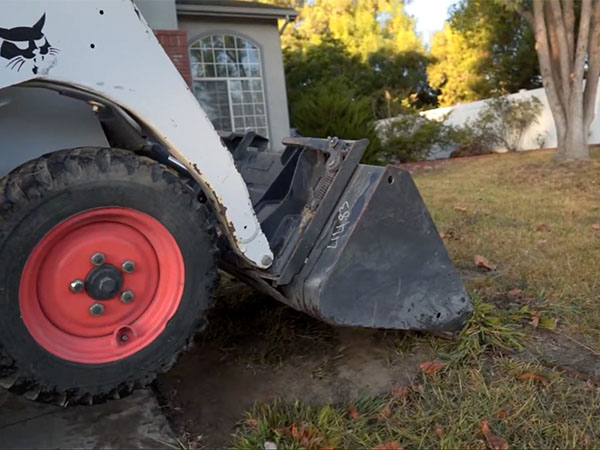
01. Remove Grass
Remove the top four inches of your existing lawn and base, and then dispose of it according to local regulations. Soil builds up quickly, so we recommend having a dump trailer onsight.
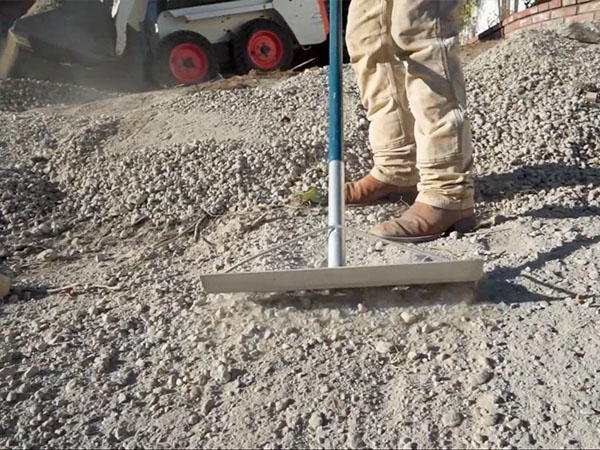
02. Add Base
Next, evenly spread three inches of class II road base over the area where you will be laying your turf. Road base will help us to create a level platform with proper drainage.
Lightly wet the area and go over it with a compactor to create a smooth base for laying the material.
Depending on your yard, you may want to add gopher wire and weed barrier to prevent vegetation and pests from sprouting through your new lawn. Weed barrier is NOT recommended if you have pets.
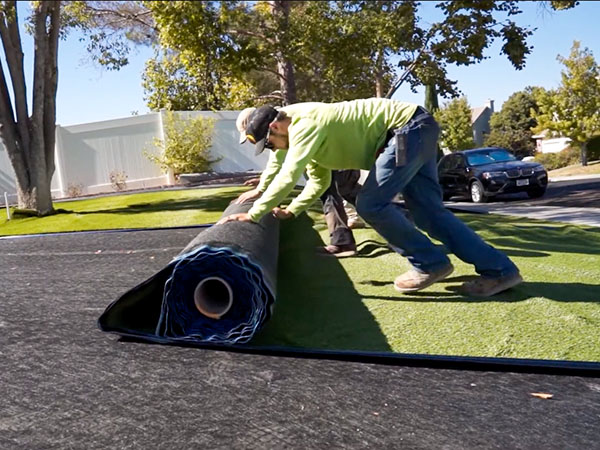
03. Lay Turf
Next is the part we’ve all been waiting for… It’s time to lay your brand new turf!
As you roll out your gorgeous new lawn, be careful not to let it drag across your freshly prepared base. We recommend letting grass sit in the sun for 30-60 minutes to expand. Make sure that the blades and stitch patterns are all facing the same way. Ignoring this would result in a poor looking lawn.
Use a carpet kicker to stretch and maneuver the turf into place.
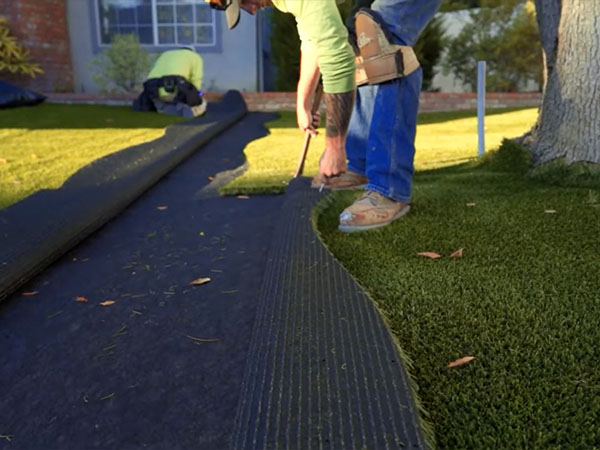
04. Cut to Fit
Next, use a box cutter to fit your new lawn to the unique shape of your yard. Leave a quarter to half an inch of turf over the border to help with finishing touches.
Then secure the seams using seam tape and glue. Correctly fitting the seams together is essential to creating a pristine, natural looking yard. Make sure that the blades of each piece of turf are oriented the same way, and that space in between stitch rows match.
Place the red line of the seam tape squarely in the center of the seam. Then create an “S” pattern with the glue on each side of the red line. Move the turf into place and let the glue set.
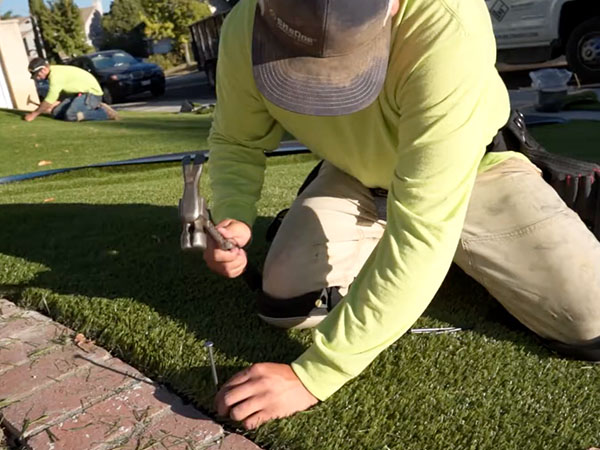
05. Secure the Perimeter
After tucking in the border with a putty knife and hammer, place 40-D 5 inch non-galvanized turf nails every six inches to secure your turf to its three inch base.
We recommend also placing a handful of nails along the seams to reinforce these areas. Then brush the turf with a power or push broom to stand the blades up straighter BEFORE adding infill. This will create a more vertical blade memory.
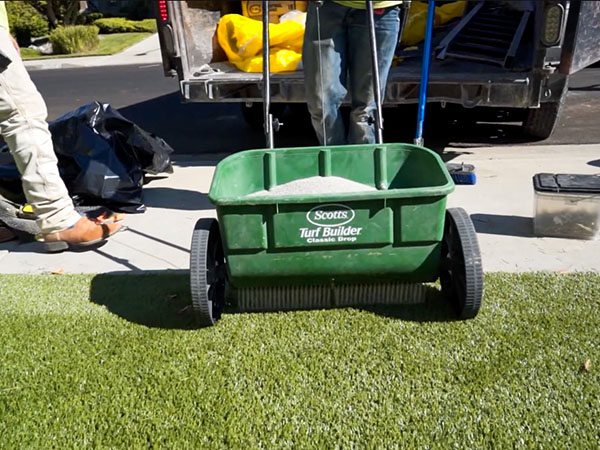
06. Spread Infill
Next it’s time to spread the infill! Adding the correct amount of infill will directly impact the appearance, performance, and life span of your lawn. Use a drop spreader to evenly disperse the proper amount of infill.
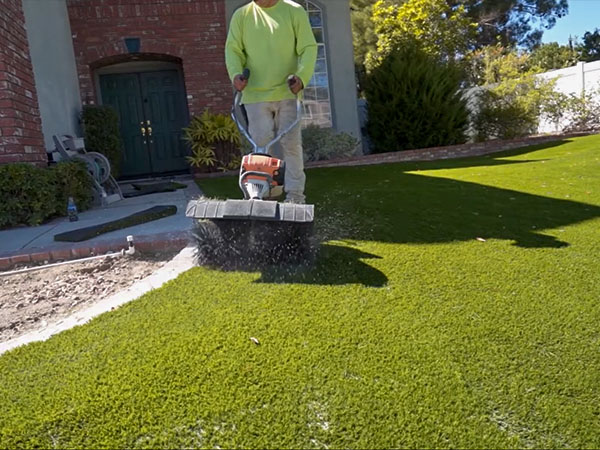
07. Brush Infill
Once the infill is in place, use a power or push broom to brush the turf. This will stand the blades up straight and give your new lawn the appearance of freshly mowed grass. Lastly, rinse the grass to get rid of all remaining dust.
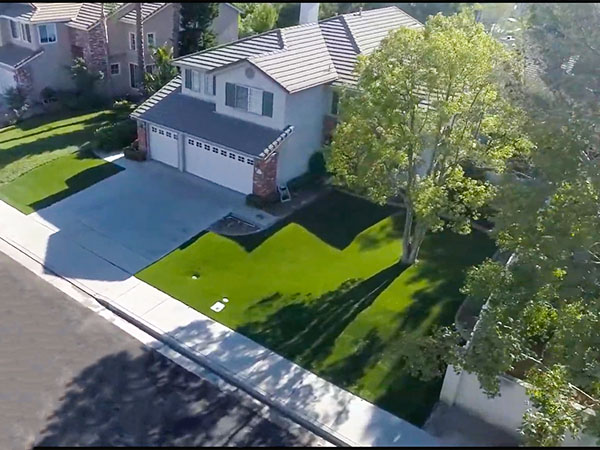
08. Enjoy Your Lawn
Once you’ve rinsed your lawn and packed up your equipment, all that’s left to do is kick back, relax, and enjoy your brand new turf! You won’t have to worry about getting up early to mow ever again. The only necessary maintenance is brushing your lawn a couple times each year.
Recommended Equipment
- Class II Road Base
- Wheelbarrow
- Dump Trailer
- Carpet Kicker or Push Broom
- Nails
- Putty Knives
- Seam Tape
- Infill and Drop Spreader
- Gopher Wire (optional)
- Weed Barrier Fabric (optional)
Turf FAQ's
Let’s talk turf! Below are some of the most frequently asked questions about artificial grass. For more information, check out all of our frequently asked questions.
Our Synthetic turf products have a 20 – 25 year life span.
Artificial grass does not require water or fertilizer, making it more environmentally friendly than natural grass. It can also withstand extreme weather conditions and heavy foot traffic.
There are several types of artificial grass available, including nylon, polypropylene, and polyethylene. Each type has its own unique features and benefits, and can be tailored to different needs and budgets.
To keep your artificial grass looking its best, it is recommended to regularly brush and sweep the grass to remove debris and prevent matting. It is also important to rinse the grass occasionally to remove any accumulated dust or dirt.
The cost of installing artificial grass can vary depending on the size of the area, the type of product used, and whether you choose to install it yourself or hire a professional. On average, however, the cost can range from $8 to $12 per square foot.
Yes, artificial grass is generally considered safe for children and pets, as it does not contain any harmful chemicals or allergens. However, it is important to choose a high-quality product that is non-toxic and meets safety standards.

